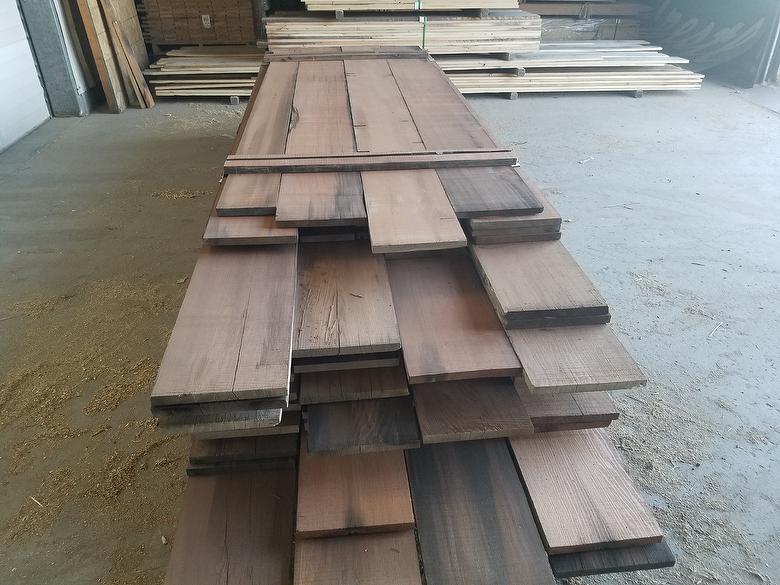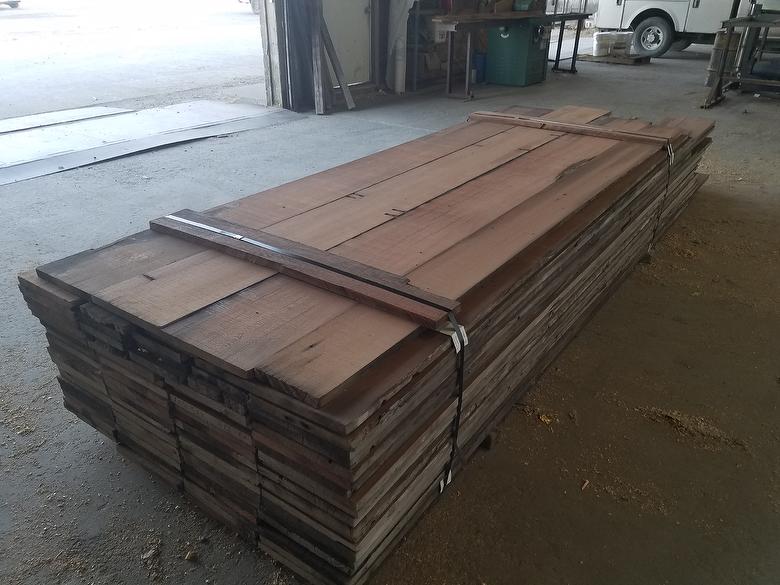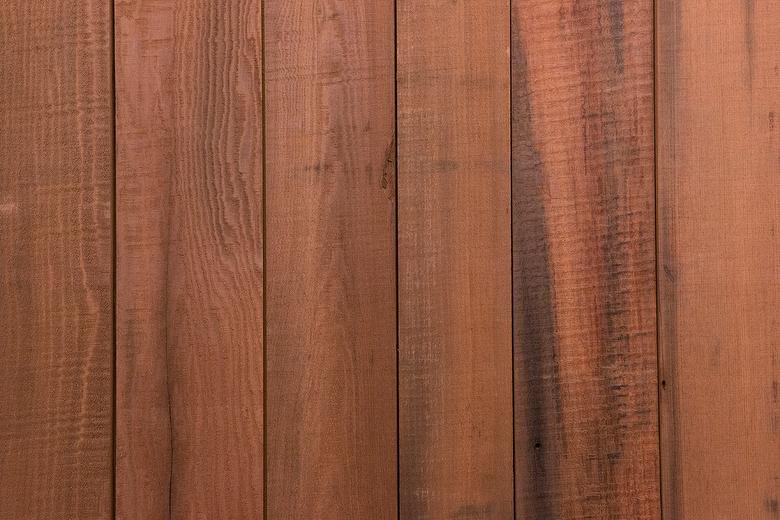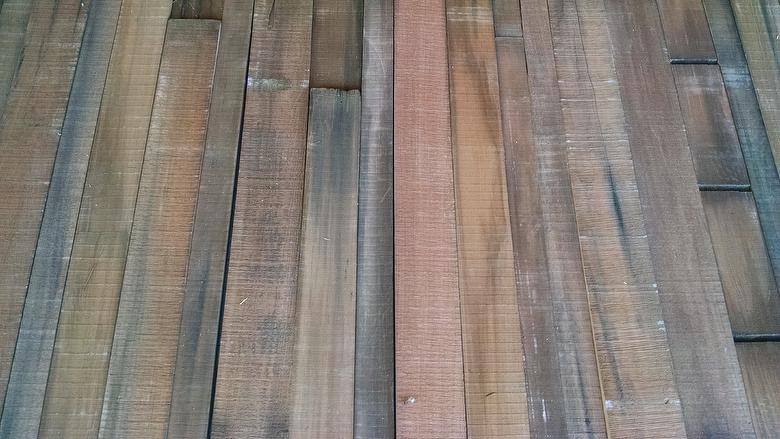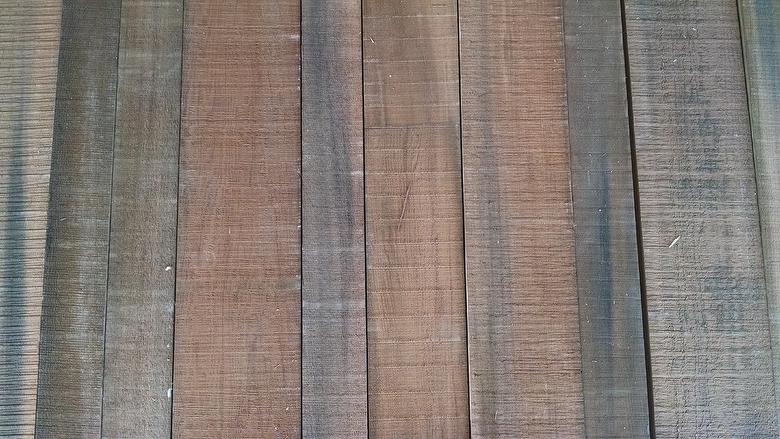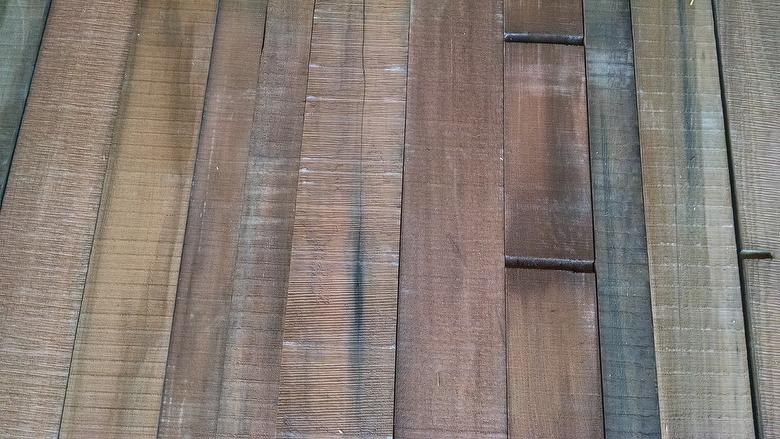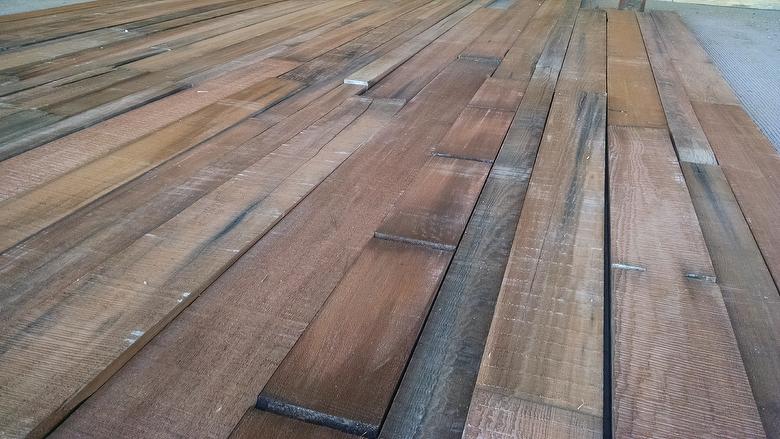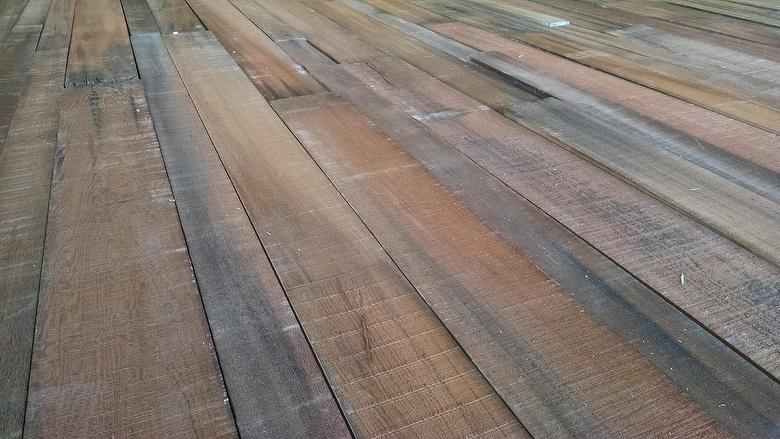1x Mixed Width Redwood Picklewood Band-Sawn Lumber
1x Mixed Width Redwood Picklewood Band-Sawn Lumber
1 weathered face / 1 band-sawn face
Specification Sheet #4215 - Weathered Redwood Picklewood Staves and Bottoms
Request Quote
Height
Width
Length
Quantity
1"
Rand 3-7"
Rand to 10'
min: 250 bf
Related Productline Pages
Specification Sheet #4215 - Weathered Redwood Picklewood Staves and Bottoms
Species
Redwood
Source
Pickle Vats salvaged from different sites in North America
Holes
Occasional small nail holes; no visible bolt holes (staves were sometimes and bottoms were always assembled with wood dowels so there are some dowel holes on the edge)
Knots
90% clear. Some boards will have pin knots.
Checking/Cracks
Unlimited as long as board is sound; end cracks to extend no more than 6" into board; some boards have dark checking, making them ideal for a distressed millwork product
Grain Pattern
Tight grain; Mixed
Moisture Content/Stability
Air-Dried. Material is seasoned and tends to be stable.
Standard Dimensions
a) Thickness: 6/4"-8/4"; b) Width (nominal): 4"-7"; actual widths typically range from 3/4" under listed width to full listed width (6" boards would typically measure from 5 1/4" to 6", for example); and c) Length: 1' increments up to 8'. Thicker, wider and longer material is often available--ask your Trestlewood representative for details and pricing.
Weight
Typically, approximately 3 pounds per board foot
Surfacing
Weathered As-is or Planed (S4S) (planed to nominal dimensions)
Salt/Minerals
Picklewood materials contain significant amounts of salt and other minerals, creating special characteristics and/or considerations like those described in the following items.
Color/Appearance
The coloring of individual Picklewood boards varies widely. Such color variations are not as pronounced in the as-is form, but processed Picklewood materials have color variations which range from normal Redwood coloring to color combinations unique to Picklewood materials.
Finishes/Glues
Certain finishes and glues do not work well with Picklewood materials. Most importantly, DO NOT USE WATER-BASED FINISHES.
Metal Corrosiveness
Picklewood materials can have a corrosive effect on metal fasteners, machinery and saw blades. Stainless steel fasteners should be used in lieu of regular steel fasteners, especially in applications involving the likely mixing of Picklewood, moisture and oxygen.
Moisture
Picklewood absorbs moisture more readily than typical Redwood. Picklewood material (especially material with air dry or kiln dry time) should be handled, stored and transported carefully to minimize any unnecessary reabsorption of moisture.
Odor
Picklewood materials often have a strong pickling smell to them. This odor is especially strong as wet material is
being cut or otherwise processed. It tends to become less and less of an issue as material is allowed to air dry (or as material is kiln dried).
being cut or otherwise processed. It tends to become less and less of an issue as material is allowed to air dry (or as material is kiln dried).
Salt Leaching
As moisture is drawn out of Picklewood materials, it brings salt with it. Salt leaching tends to be the most concentrated at knots and material ends, but can happen anywhere. Air dry time (and kiln drying) reduces, but does not eliminate, salt leaching. Approaches to salt leaching include sanding and refinishing impacted areas to doing nothing (and letting the salt serve as one of the most visible evidences of the history and reclaimed nature of Picklewood materials.) Salt is more visible on processed materials than on as-is materials.
Appearance Variation
Boards can vary in appearance from piece to piece and even within a piece. The characteristics described on this specification sheet generally apply to each board's featured face. The opposite face and edges can differ from the featured face in texture, coloring, and other characteristics unless otherwise noted. Weathered lumber / barnwood will have at least one weathered face. The opposite face and edges can be any combination of weathered and fresh-sawn. If weathered, the weathering will often be different (amount, mix of colors, etc) than on the featured face.
Trestlewood sometimes uses one or more juicing processes to help fresh-sawn and/or less weathered/aged faces/edges blend in with weathered faces/edges. All else being equal, juicing is more likely to be used in situations where (a) lumber is cut from timbers or wider lumber (thereby creating fresh-cut faces and/or edges); (b) Buyer wants all (or most) faces/edges to be weathered/aged; (c) Buyer desires to increase the consistency of the weathered/aged look from face to face; and/or (d) Buyer wants a darker weathered look.
Trestlewood sometimes uses one or more juicing processes to help fresh-sawn and/or less weathered/aged faces/edges blend in with weathered faces/edges. All else being equal, juicing is more likely to be used in situations where (a) lumber is cut from timbers or wider lumber (thereby creating fresh-cut faces and/or edges); (b) Buyer wants all (or most) faces/edges to be weathered/aged; (c) Buyer desires to increase the consistency of the weathered/aged look from face to face; and/or (d) Buyer wants a darker weathered look.









